Albatrosses, members of the family Diomedeidae, are some of the most spectacular seabirds, perfectly adapted to a life of sea and air. Albatrosses are some of the largest flying animals alive today, with the wandering albatross (Diomedea exulans) having a wingspan of up to 12.2’ (3.7 meters) and weighing in excess of 20 lbs (9 kg). With this wingspan, and their ability to lock their wings in place via a tendon in the shoulder, albatrosses can travel hundreds of miles a day without even having to flap their wings. Albatrosses are also long lived, with fascinating life histories. Wisdom the Laysan albatross (Phoebastria immutabilis) is 70 years old and still laying eggs. They invest a lot of time in their young too, taking the quality over quantity approach. Most species only lay a single egg and depending on the species the chicks can take 140-280 days to fledge. Once fledged some albatrosses stay at sea for 6 or more years before returning to land to breed. Indeed, nesting is the only reason albatrosses need land at all.
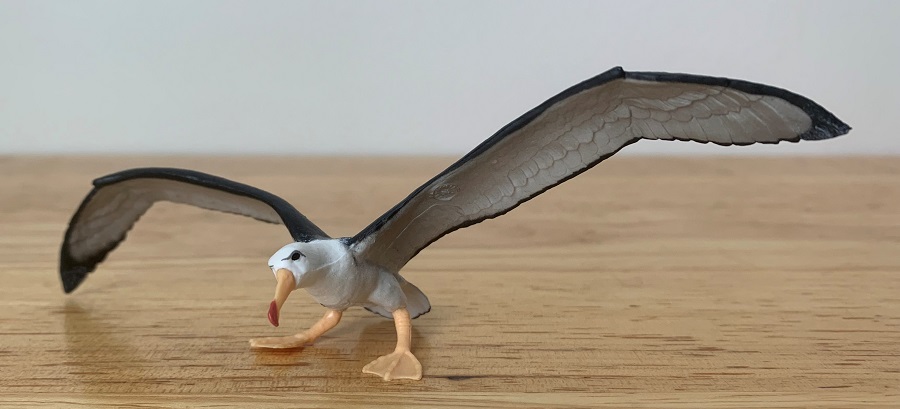
These remarkable seabirds have long featured significantly in nautical folklore, their presence usually being a good omen, and to kill one being bad luck. In Samuel Taylor Coleridge’s 1797-98 poem, The Rime of the Ancient Mariner, the narrator is forced to wear the albatross he killed around his neck as punishment, leading to the still used phrase “an albatross around my neck” to describe something burdensome in life. Due to their charismatic nature and popularity albatrosses routinely show up as toys too, with most of the toys being the same few species, usually the giant albatrosses of the Diomedea genus.
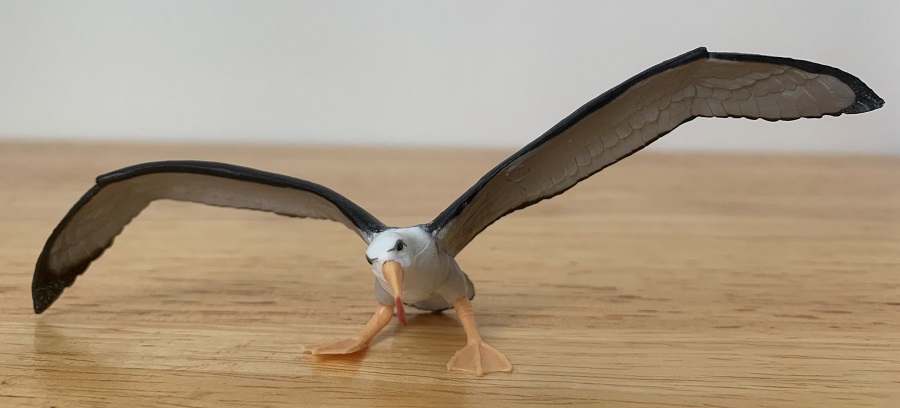
In total there are roughly 21 species of albatross divided into four genera, although there is some debate about how many species there really are and it might be more or less than that number. Today’s review is for the Papo albatross which represents the black-browed albatross (Thalassarche melanophris). Members of the Thalassarche genus are medium sized albatrosses also known as mollymawks.

The Papo albatross is presented in a standing posture with the head slightly tilted and wings outstretched. The wingspan of the figure measures 5.875” (14.9 cm) while the wingspan of the black-browed albatross measures 6.5-7.8’ (1.9-2.3 meters). This puts the Papo albatross at 1/13-1/16 in scale. It is a small figure, better displayed with other marine life than with most other bird toys, so it makes sense that Papo would include it in their marine life range.
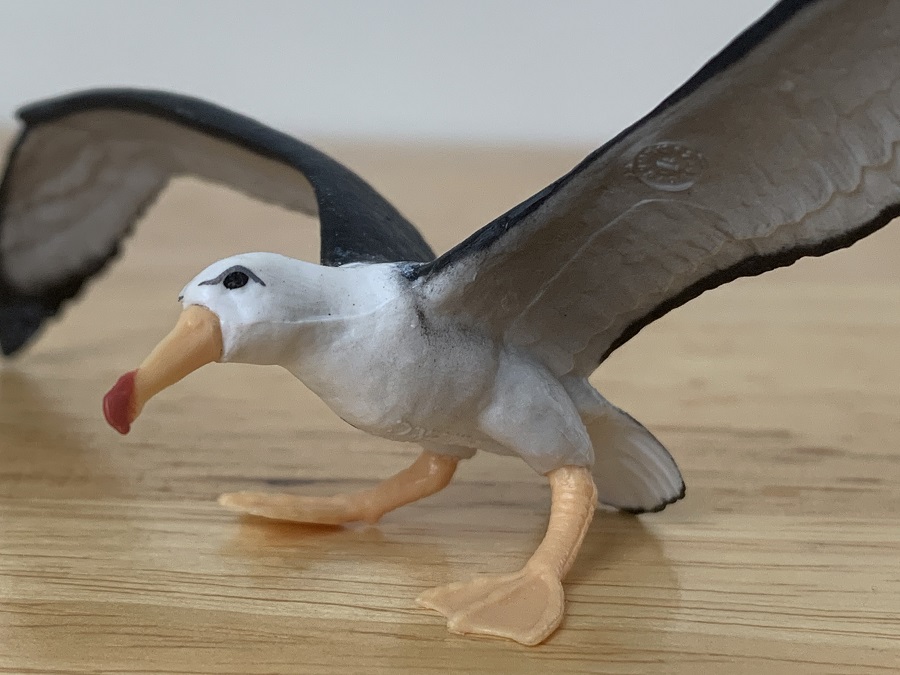
Black-browed albatrosses have a circumpolar distribution around the southern oceans and breed on 12 different islands within their range. This is also the species most likely to be seen in the northern hemisphere with some individuals showing up as far north as England. They feed on fish, squid, crustaceans, and carrion. Egg incubation lasts up to 71 days and it takes 120-130 days for the chicks to fledge. Although the young birds may return to land after 2-3 years at sea they won’t actually breed until they’re about 10 years old.

The Papo albatross is painted with a dark gray/black back and tail and white rump. The head is white too with the dark eyebrows that give the species its name. The beak and webbed feet are pale orange, and the beak has a bright red tip. The underside is white with the wings having black edging and a gray wash over them. All of this makes it identifiable as a black-browed albatross.
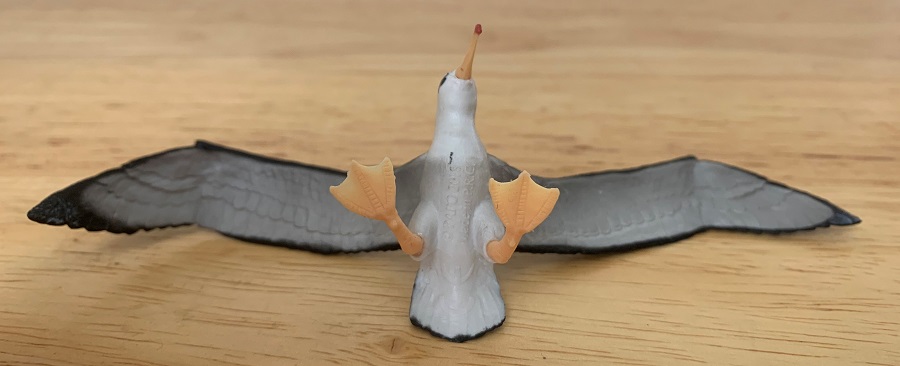
The detail work here is pretty good, though hard to discern due to the small size of the figure and the dark paint along the back. Each feather is beautifully etched onto the wings and tail while the body appears smooth. Nostrils are present, high up on the hooked beak as they should be, and scales are etched onto the toes, even on the undersides.
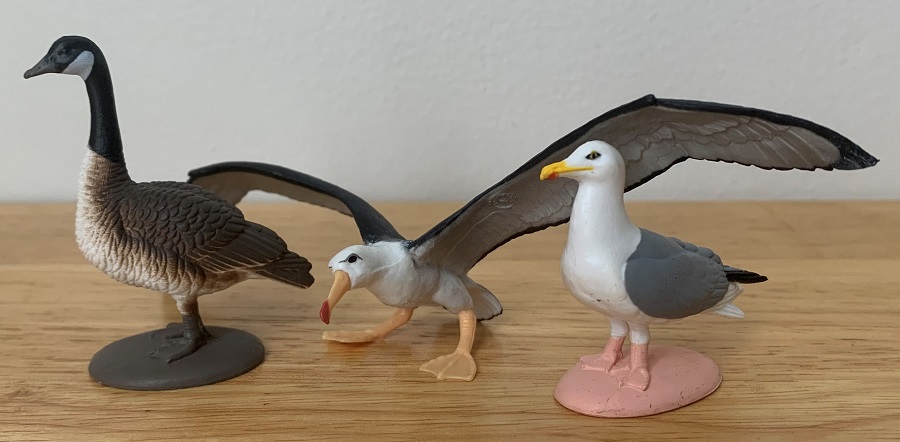
Overall, this is a respectable little toy. Minus the outstretched wings it is not much larger than a Safari TOOB figure but in execution it is just as good as its larger counterparts. There are other decent albatross figures to choose from but I’m not aware of any other black-browed albatross so that should make it worth seeking out, even if you already have an albatross figure. The Papo albatross was released in 2018 and is still in production, it retails for less than $4.00 USD.
Disclaimer: links to Ebay and Amazon on the AnimalToyBlog are affiliate links, so we make a small commission if you use them. Thanks for supporting us!



